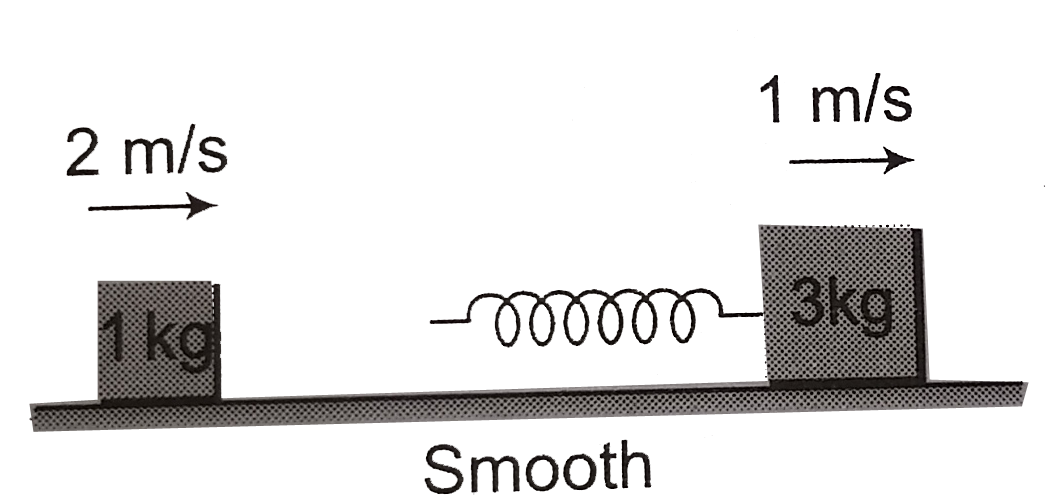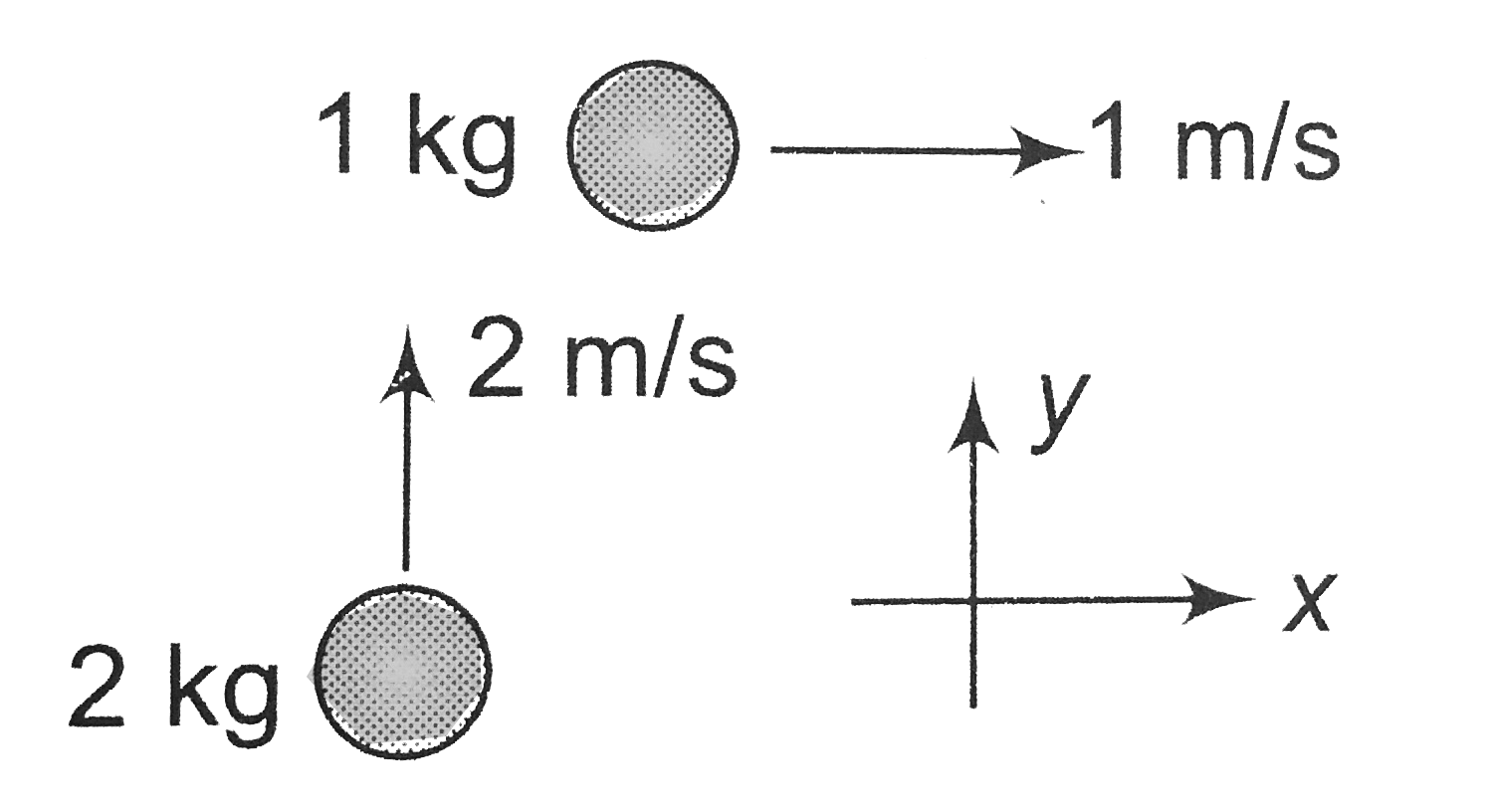Two blocks of masses 1kg and 3kg are moving with velocities 2m/s and 1m/s , respectively , as shown. If the spring constant is 75N/m , the maximum compression of the spring is

5cm
2cm
3cm
4cm
The correct Answer is:B
Due to spring force , velocity of 1kg decreases and that of 3kg increases . At the maximum compression , both the blocks move with same velocity.
By the momentum conservation
1×2+3×1=(1+3)v⇒v=54m/s
By the energy conservation
121(2)2+12×3(1)2=12(1+3)v2+12kx2
72=2(54)2+752x2⇒752x2=72−258=38
x2=1100⇒x=110m=10cm

Topper's Solved these Questions
Similar Questions
A 4.0 kg body, moving with a speed of 2.0m/s ,collides with a spring bumper of negligible mass and force constant 100Nm−1 .The maximum compression of the spring is ?
View SolutionTwo blocks of mass 2kg and 5kg are given speed as shown in the figure. System is lying on a frictionless surface and the blocks are connected by a massless spring if spring constant 35Nm. Find the maximum compression in the spring.
 View Solution
View Solution
Knowledge Check
- Question 1 - Select One
In the arrangements as shown, blocks A and B of the masses as shown move in the direction with velocities as indicated on a smooth surface. The spring constant is 300 N/m. find the maximum compression in the spring (approx).
 A17 cmB22 cmC32 cmD38 cm
A17 cmB22 cmC32 cmD38 cm - Question 2 - Select One
Two blocks of masses m1=2kg and m2=4kg are moving in the same direction with speeds v1=6m/s and v2=3m/s, respectively on a frictionless surface as shown in the figure. An ideal spring with spring constant k=30000N/m is attached to the back side of m2. Then the maximum compression of the spring after collision will be
 A0.06mB0.04mC0.02mDnone of these
A0.06mB0.04mC0.02mDnone of these - Question 3 - Select One
A body of mass 5 kg moving with a speed of 1.5 m/s on a horizontal smooth surface collides with a nearly weightless spring of force constant k = 5 N/m. The maximum compression of the spring would be
 A0.5 mB0.15 mC1.5 mD0.12 m
A0.5 mB0.15 mC1.5 mD0.12 m
A block of mass m moving with velocity v0 on a smooth horizontal surface hits the spring of constant k as shown. Two maximum compression in spring is
 View Solution
View SolutionA mass of 0.5kg moving with a speed of 1.5m/s on a horizontal smooth surface, collides with a nearly weightless spring of force constant k=50N/m The maximum compression of the spring would be.
View SolutionTwo bodies of masses 1kgand2kg are moving in two perpendicular direction with velocities 1m/sand2m/s as shown in figure. The velocity of the centre of mass (in magnitide) of the system will be :
 View Solution
View Solutionmass of 0.5 kg moving with a speed of 1.5m/s on a horizontal smooth surface, collides with a nearly weightless spring of force constant k = 50 N/m. The maximum compression of the spring would be
 View Solution
View SolutionA solid cylinder of mass 3 kg is rolling on a horizontal surface with velocity 4ms−1. It collides with a horizontal spring of force constant 200Nm−1. The maximum compression produced in the spring will be
View Solution

